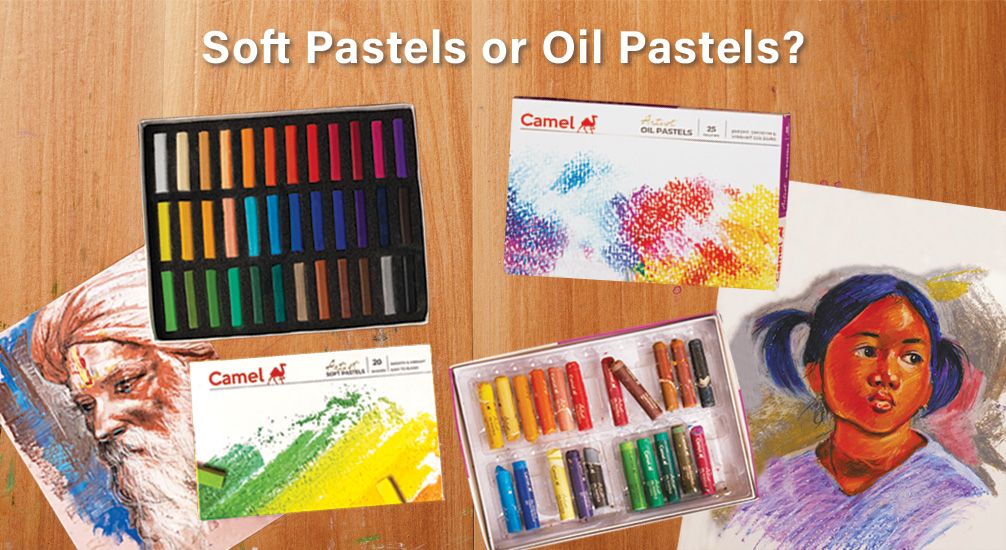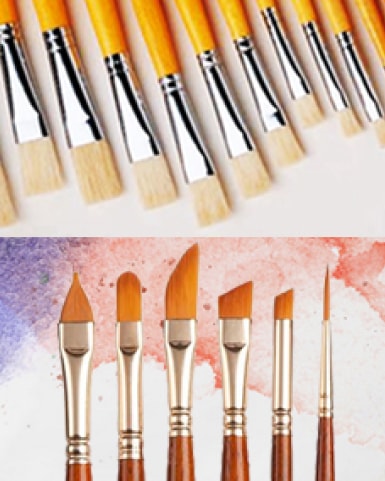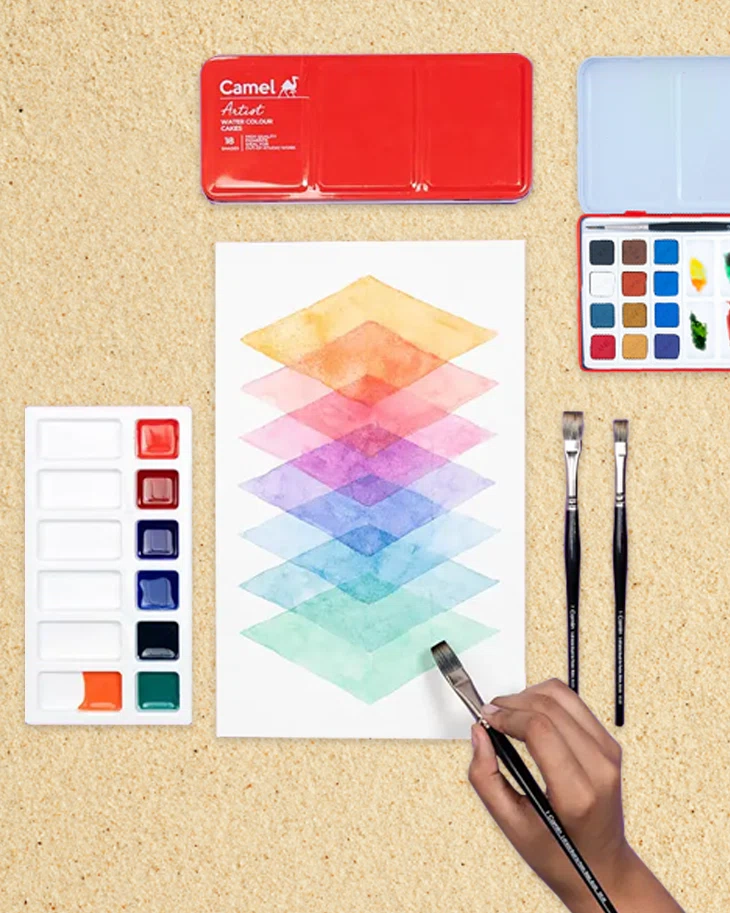Soft pastels and oil pastels are both popular drawing mediums among artists. Although they look the same, their unique characteristics influence their application, blending and suitability for various techniques. Understanding the differences between these two can help artists choose the appropriate medium for their creative projects.
Composition and Texture
- Soft pastels: Soft pastels are like dry mediums with no binder. They have a dry or chalky consistency. They are vibrant and give your painting a soft, free-flowing finish.
- Oil pastels: Oil pastels are made of pigment mixed with a non-drying oil and wax binder. They have a creamy, crayon-like texture. This composition allows them to adhere to various surfaces, including textured paper, sketching paper, tinted paper and canvas.
Blending and Layering
- Soft pastels: Their dry and chalky nature facilitates easy blending and layering. You can create a smooth gradient and subtle transitions. You can blend with soft pastels with your fingers or a light brush. Camel Artist Soft Pastels can be used for various techniques like blending, side strokes, layering, hatching and cross-hatching. The square-shaped sticks offer a better grip for these fine layering and blending techniques.
- Oil pastels: Oil pastels have a thick and heavy body as they have non-drying oil and wax. Camel Artist Oil Pastels, for example, are so versatile that they can be used for underpainting and wet-on-wet techniques*.
*Wet-on-wet technique: For this, you apply a layer of Camel Linseed Oil on your canvas. Dip the oil pastel in the same oil and use it to paint. This helps create a smooth blend of colours on the canvas. Apply Camel Fixative Spray after you finish to protect the pigment and richness of the painting.
Colour Intensity and Finish
- Soft pastels: They offer high colour intensity with a matte finish. The pure pigments provide brilliant hues, but the powdery surface can be prone to smudging. You can apply a layer of fixative spray to prevent smudging.
- Oil pastels: Deliver rich, vibrant colours with a glossy finish due to their oil content. The colours remain intense over time.
Surface Compatibility
- Soft pastels: These are best applied to textured papers or surfaces that can hold the loose pigment. These types of papers adhere to the colour well and you can easily layer colours.
- Oil pastels: Versatile in adhering to various surfaces, including paper, textured paper, sketching paper and canvas. Their oily binder allows them to be used on multiple surfaces.
Techniques and Applications
- Soft pastels: Ideal for techniques requiring soft transitions and broad coverage, such as portraiture and landscapes. They are well-suited for creating atmospheric effects and delicate details.
- Oil pastels: Suitable for impasto techniques and expressive strokes, allowing for a painterly approach. They can be used to create textures and are excellent for mixed-media projects due to their compatibility with various surfaces.
Durability and Preservation
- Soft pastels: Require the application of fixatives to prevent smudging and preserve the artwork. However, excessive use of fixatives can alter the colours and diminish vibrancy.
- Oil pastels: Generally more durable without the need for fixatives. However, the surface may remain slightly tacky, attracting dust and debris over time, so a fixative spray is recommended, especially if you are painting using different techniques or on a canvas.
Both soft pastels and oil pastels cater to unique artistic styles, offering endless possibilities for creators. Camel Artist Soft Pastels are made with rich pigments but they have binders. They are like a dry stick that mimics soft, free-flowing painting-like effects. The square-shaped design is comfortable to hold and lets you blend, layer, and try hatching or cross-hatching techniques.
On the other hand, Camel Oil Pastels come in two ranges. The Camel Oil Pastel student range offers smooth application, adhering effortlessly to various papers, making it perfect for beginners and young artists. For more advanced artists, the Camel Artist Oil Pastels provide rich pigments combined with non-drying oils and paraffin wax. They are ideal for layering, intermixing, and scraping techniques. Whether you prefer the soft, blendable texture of Camel Artist Soft Pastels or the creamy, expressive strokes of their Oil Pastels, both are designed to bring your creative visions to life. Experiment with both and unlock the true potential of your art!
Did this article help you learn something new?
Share your thoughts with us in the comments below.
Leave a comment
Comment added
Comment updated
Comment deleted
More inspiration
“
“Artists are just children who refuse to put down their crayons.”



.jpg)


